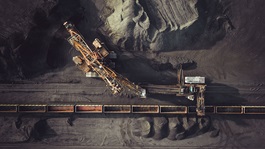On December 1, the Alberta Energy Regulator (AER) brought into force the new Liability Management Framework (LMF) as previously announced on July 30, 2020. The LMF is detailed in Directive 088: Licensee Life-Cycle Management and Manual 023.
The LMF consists of six components, with two describing substantively new programs. The first new program is a licensee capability assessment (LCA), which replaces the license transfer provisions of the licensee liability rating (LLR) program under Directive 006. The second is an inventory reduction program (IRP), stipulating a minimum annual abandonment and reclamation spend, and regulatory incentives for spending above the requirement. The LCA and IRP are intended to work together to reduce the number of inactive and orphaned wells and other infrastructure in Alberta. This update focuses on the LCA, and the new factors the AER will examine under it.
For an overview of the LMF’s six components please see here.
Application of the LCA
The LCA applies to licensees or approval holders regulated under the Oil and Gas Conservation Act and the Pipeline Act. This includes conventional oil and gas wells, pipelines and facilities and some in situ facilities. It does not apply to oil sands or coal mining and processing facilities.
The LCA will be used for three purposes. First, to inform the AER on the eligibility of applicants to hold licences under Directive 067. Secondly, informing the need for, and amount of, security in licence and approval applications and transfers. Thirdly, to set the AER’s mandated target for a licensee under the IRP.
The LCA has two major components: a risk group assessment and a performance group assessment. Together these assessments inform a qualitative determination by the AER of a licensee’s ability to meet its regulatory and liability obligations throughout the lifecycle of an energy development. This is in contrast to the previous quantitative determination made under the LLR program.
Risk group assessment
The risk group assessment measures a licensee’s level of financial distress and its magnitude of liability.
Level of Financial Distress
The level of financial distress evaluation analyzes five parameters from financial data provided by a licensee under Directive 067:
- Net profit margin (three-year average);
- Current ratio;
- Debt-to-equity ratio;
- Interest coverage ratio; and
- Cash flow from operations to debt ratio.
These five parameters are weighted differently, with the net profit margin and the current ratio together accounting for 60% of the analysis. The AER’s analysis will determine a licensee’s level of financial distress as low, medium or high.
Magnitude of Liability
The magnitude of liability is based on a licensee’s site-specific liabilities under Directive 001 and abandonment, remediation and reclamation liabilities under Directive 011. Licensees with a total magnitude of liability of less than $25 million will be assigned a “low” rating, between $25 and $150 million as “medium,” and greater than $150 million as “high.”
Performance group assessment
The performance group assessment breaks licensees into peer groups and then ranks them within their defined peer group. Peer groups, broadly, are producers, pipeline operators, midstream companies and waste management companies. The producer peer group is further divided based on producer size and production type (i.e., junior-dry gas, or intermediate-heavy oil/bitumen). Licensees are ranked in four categories: 1) remaining lifespan of resources; 2) operations; 3) closure; and 4) administration. These categories are broken down into numerous factors, each of which is weighted differently, depending on the peer group.
Remaining Lifespan of Resources
This category looks at the longevity of a licensee’s mineral resources and whether current operations can fund required closure activities. For producers, the AER is focused on production decline rates and inactive and marginal well ratios. For midstream and waste management companies, the focus is on inactive facility ratios.
Operations
The operations category focusses on a licensee’s history of safe and responsible operations and regulatory compliance. The preeminent factors in this category, for all peer groups, are non-compliance rates in inspections, non-compliance with well downhole requirements under Directive 013 and release and spill rates.
Closure
The closure category includes factors that track recent closure-related expenditures and the pace of a licensee’s abandonment and reclamation liability growth. The most heavily weighted factors are the ratio of closure spend to deemed liability and the inactive liability trend; essentially whether inactive liabilities have increased or decreased in the last three years, and at what rate.
Administration
This category considers a licensee’s compliance record on administrative matters, payment of AER fees and levies and payment for mineral leases. There are three equally weighted factors in this category: 1) compliance and payment into the orphan fund; 2) payment into the administrative fund levy; and 3) compliance with mineral lease expiry notices.
Payment of security
The AER may require security be posted by applicants for new licences or by parties to a licence or approved transfer. The value of this security will be informed, in part, by the LCA. Although Directive 088 describes the factors and their weighting considered in the LCA, it remains to be seen how the LCA will be used in practice. One hurdle for both licensees and the AER will be translating the qualitative labels generated by the LCA into quantitative security requirements in a transparent process. Another will be for licensees to gain enough comfort with the LCA process to calculate security requirements, if any, before an application for a regulatory approval or in conjunction with a transaction.





